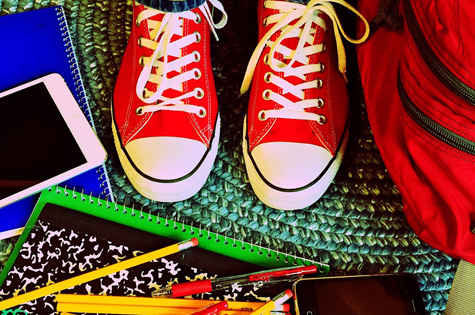Bring Out The Best In Your Child:Back to School Tips for Parents
Date: January 13 2016

As the Back to School specialist, Officeworks is focused on bringing the best out in children’s minds. Firstly, through providing the school supplies that are crucial to learning and development and secondly by helping and inspiring parents and children alike with content that helps to ‘let their amazing out’.
In 2016, Officeworks has teamed up with Positive Psychologist and mother of two, Michelle McQuaid, to help parents prepare their children for their best year yet at school.
1. Help Your Kids Discover Their Strengths. For younger kids, all you need to do is start looking for the times they ‘light up’ and try to name the strengths you can see them exercising. For kids 10+, the free VIA Youth Survey (www.viacharacter.org) is a great tool to discover their character strengths. Visual cues are very useful for kids, so help them to create a strengths poster highlighting the things they do best.
2. Praise Their Efforts. In a result-orientated world it’s easy to focus only on the things our kids are achieving. We can miss celebrating the processes they are discovering and the efforts they are making to get these results. Praising children’s intelligence and talent can harm their motivation and their performance. Instead try to praise their learning process - what they accomplished through practice, study, persistence, and good strategies. For example: “I can see you’ve been practicing your drawing. What a great improvement.”
3. Make Emotions Manageable. The way we feel impacts the way our brain works. Negative emotions like anger, anxiety and sadness tend to narrow our brain to focus on what’s right in front of us and turn inwards. Positive emotions like joy, interest and gratitude tend to broaden our brain to see more possibilities. Help your child to name their emotions and become aware of how different feelings impact the way their brains work. Try creating a chart with the different feelings they have - this can make understanding and navigating emotions a far more manageable process.
4. Cultivate Heartfelt Positivity. In addition to broadening our minds, heartfelt positive emotions like awe, amusement and love help to build our emotional, physical, intellectual and social resources. They’re like money in your child’s bank of resilience for when the harder days fall in life. Create a jar of heartfelt positivity by asking your family to write down at least three ideas to put into the jar. As you plan for after school or weekend activities, grab an idea from the jar and put it into action.
5. Give Them A Jolt Of Joy. A little bit of stress is not bad for us, it’s a natural part of learning and growth. However, when stress becomes overwhelming it helps to teach kids how to short circuit this feeling by creating a jolt of joy. An example could be humming a good song in their presence. It will help to restore happy brain hormones like dopamine and serotonin.
6. Count Kindnesses. Kindness has been found to help our brain experience pleasure, build trust and social connections. It triggers the hormone oxytocin in our blood stream, which helps lower our levels of stress and improve our focus. Help your children discover kindness as a super power by creating a ‘Kindness Challenge’ at home, awarding points for acts of kindness. After a challenged is completed, ask them how they felt pursuing these and help them to notice the impact it can have.
7. Grow Their Gratitude. Researchers define gratitude as experiencing a sense of wonder and appreciation for life. Studies have found that it helps us to savour the good things that happen, to feel more confident and to cope in times of stress or even jealousy. Help your children grow their gratitude by checking in each night at the dinner table for the best part of their day and why they’re grateful for it.
8. Catch Their Stories. As we try to make sense of the world our brains are constantly creating stories about why things are happening and what might happen next. These stories shape the way we think, feel and act. The problem is our brain often focuses on the worst possible outcomes, so when your child is struggling, try to hear the stories they’re telling themselves. You could help them write or draw this. Are there any other explanations for what’s unfolding they might have missed? Add these to the page. How does this change the story and what do they want to do as a result?
|
||||||||














__small.png)










